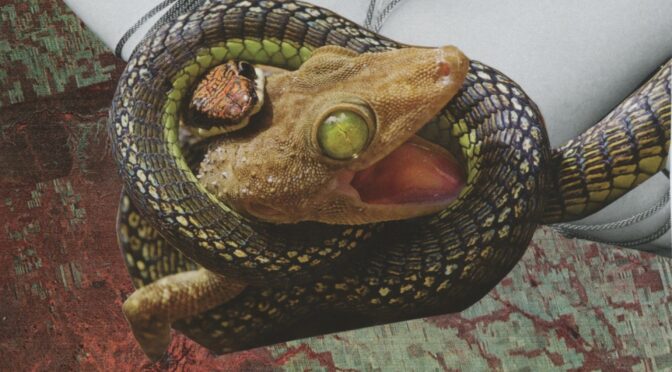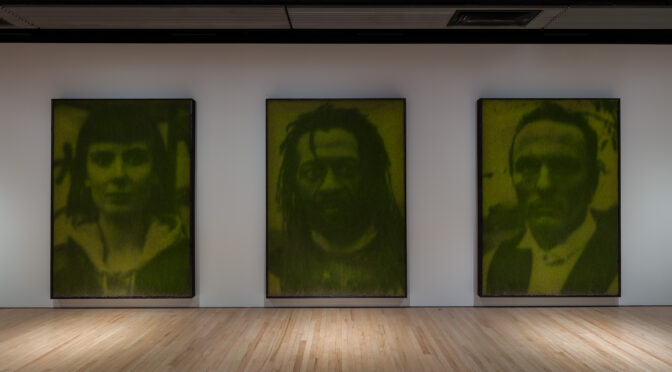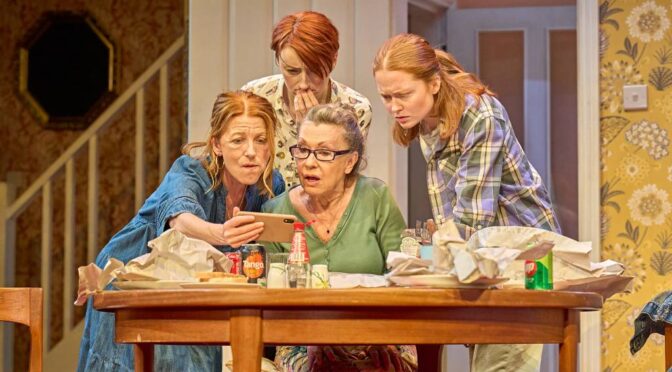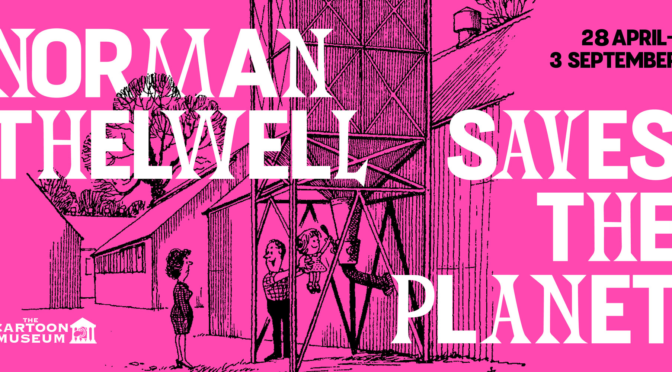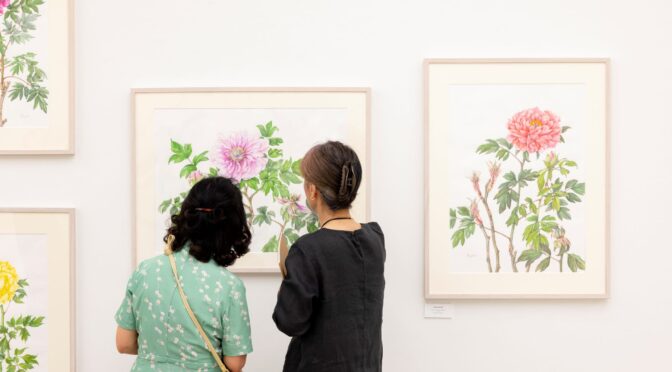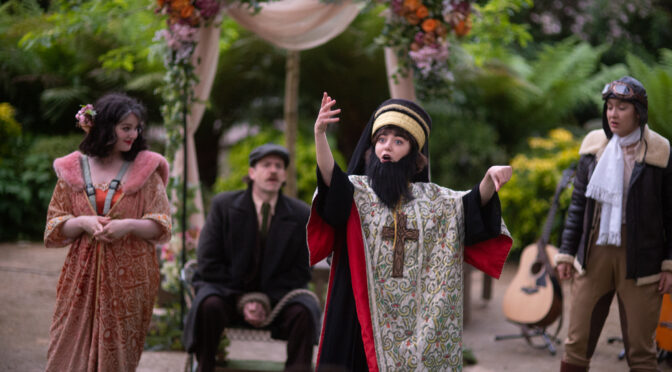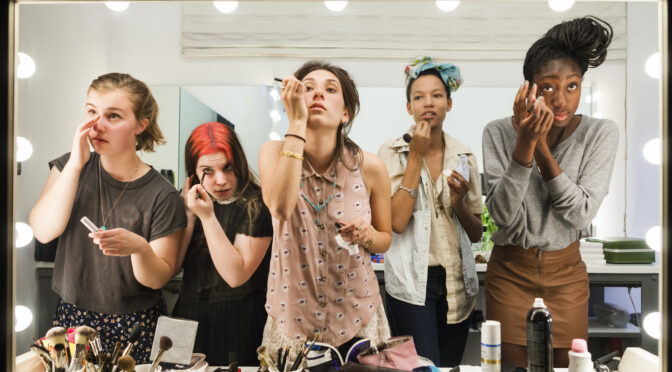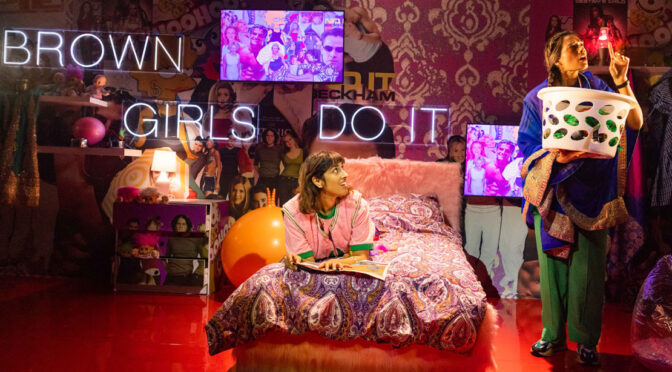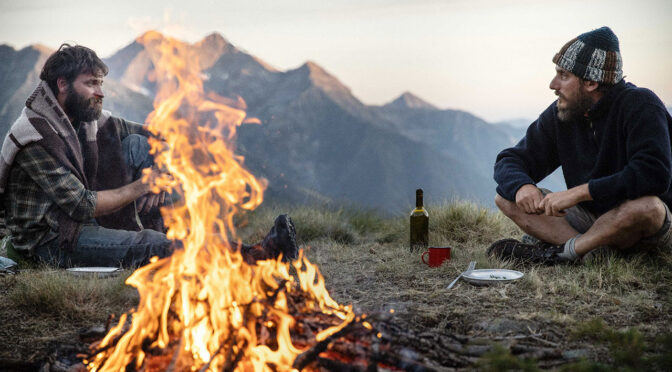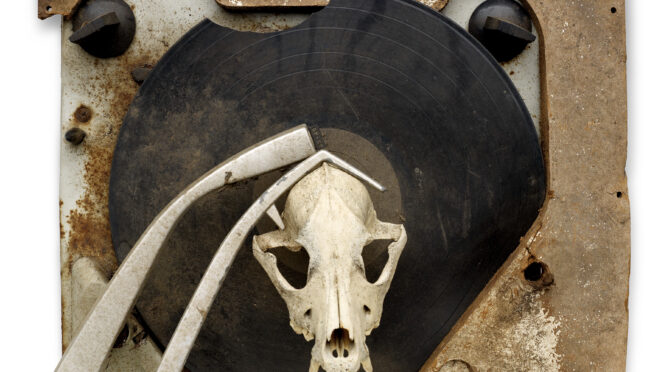VSSL Studio’s second exhibition of FACET, as part of an ongoing series of five exhibitions, now holds June Lam at its centre. His solo show culminates years of artistic and interdisciplinary practice, across diverse mediums, of sculpture, performance, and dance. This exhibition showcases his collages, 25 of which play to stories of alternative renderings and new futures that bring his world into view. No unenvied cuts breach the walls of Lam’s collages. Narrative induced; they are built upon with intention. No matter surprises still occur – Intimate and mystic. Floating. An engine of being filled with dis/pleasure, loss, transgressive sexuality, death, and friction tracks itself along these walls painted in a gemstone-like bottle-green.
Slinky refraction cuts between constantly changing elements, – and what falls out of sight or frame is left for dreamwork. The visuals of the collages are like final credits, phone screenshots, and film stills, waiting on a caption to dramatize and disturb the power. Donna Marcus Duke offers an accompaniment text The Liberating Power of the Cut, which is for the loved and the reviled. This text is a plucky kind of forever love letter written directly to the collages on display. Referenced and moderated, it is a pull-on reason to contextualise and caption Lam’s work, and the extraordinary realities, mediations, and experiences it attempts to conjure.
The grasping is always visual, and if you follow the collages around in order: sex and death bookend the series. Your first point of call rubs elbows with inside(s) and outside(s): Tissue, [2020] reveres no complacent cut. Instead seeks a whole that we may slip, fall, and find ourselves in a cinematic kinship and quite at home within. Tissue makes anything he says sound like sex. The immediacy of the cut, the shape of its line, the instinctive rhetoric, the made-for-screen incidental waves, and charged references all are encapsulated throughout Lam’s collages, – vacant here are any grey areas. Blessing 2 [2023], is halfway to madness, and it is lucid in its investigation of the natural order. This relative and ambivalent lucidity places a seemingly ancestral deity to have exchanged its seat on a lotus flower for a magnified fish. Submerged into different scales, any extreme closeup of the macro vs the micro is cut-and-paste perception management. Rinse [2020], also plays to this, it is simplistic and evocative, a pool inescapable through our shrinkage. All these collages marinade and lather in kinship, this of which prevails as the central theme throughout this exhibition, even as a solo traveller.
Fevered freshness, takes clutch with the additional 2 artwork print-run, made earlier this year: Offering to Guanyin [2023], and Bao Ngoc [2023]. These prints are magnetic and self-reflective. They are generous in exploring Lam’s personal history, the left out/ leftover history, and the intergenerational trauma that both bring up, stoking a connection to his ancestral parts. This is now made real as legacy on paper. These old sounds treble, and there is no loss through partiality, for the backgrounds of the collages contain writing drawn on like that of a confessional or a diary entry. This puts a delicate face on every family as a society and as their plane of reality.
Some collages shown in this exhibition are part of a former series, titled under Squeeze, which reckons to extend beyond the bodily limit. The series began its making journey during Covid, with Covid’s touch starvation as nothing but a devout reprimand. Stalling between a fissure and a connection, the collages ask if there is any hook to be held, for it is boundless, filled with yearning and touch deprivation. Skin Hunger, [2020], part of the Squeeze series is a cradle cataloguing the image of the body. The corporal/carnal compositing and translating of space for more or less body/ or more or less human-[touch]. Cistern [2020] also from the Squeeze series forges a reaching that is infectious, eats so whole, so much so it is a new form of watery embodiment, of exteriority. Reaching each other through reaching into each other, a kind of feeder is established. Their world is a riot. The depths of which are drunk from and ready to erupt for all to see.
We still can’t stop the wind with our hands, high pressure will start a fire, and June Lam stages a cut of his life. His practice of making collages is on view at VSSL Studio as a culminating cut-and-dry show, for your pleasure until the 27th of August.
Featured Image: June Lam’s collage exhibit from his series Squeeze
Review by Devika Pararasasinghe
Devika lives and works in London, by trade an artist and snake oil salesperson. Devika graduated, last September with a research MFA at Ruskin School of Art, University of Oxford.
Read Devika’s latest review Norman Thelwell Saves the Planet-The Cartoon Museum (abundantart.net)
Footnote:
Collage has a rich history in queer aesthetics and has been a favoured medium for many queer artists. The act of collage-making mirrors the world-making practices of queer culture, where individuals and communities necessarily have learnt to explode, edit, discard and reassemble societal norms and expectations to create their own forms of identities, communities and aesthetics. In this sense, collage can be seen as a form of resistance to dominant cultural narratives and a way to create new possibilities and futures. June Lam’s use of collage in his work for the FACET programme continues this tradition.
ABOUT JUNE:
June Lam (b. 1990) is a community organiser and multidisciplinary artist of Chinese and Vietnamese ancestry, working across performance, dance, sculpture and collage. Trained in MA Sculpture at The Slade, his work centres queer desirability politics, fag effeminacy, and embodied experiences of intergenerational trauma. His performances involve leading meditations, connecting with ancestral parts, and movement inspired by deity practice. Creating intentional community spaces is intrinsic to June’s artistic practice. He co-founded grassroots trans healthcare fund We Exist and founded queer East and South East Asian arts platform GGI끼. These both provide necessary direct action to centre marginalised communities and address the classism and inaccessibility of traditional arts spaces by working outside of them.
This includes bringing the ethos of community organising into nightlife. GG 끼 emerged from a need for nightlife spaces safe from anti-Asian hate and transphobia and offers relief from the fetishising gaze. GGI끼 showcases radical live performance, visual arts & DJs with a hard industrial sound, defying stereotypes around ESEA passivity. For We Exist, June produced group exhibition ‘In Dedication’ at The Koppel Project, featuring 28 trans artists from the UK and beyond. He is on the advisory board and programming team for This Bright Land at Somerset House and was a judge for Guildhall Futures Fund 2022. June has performed and been exhibited at Site Gallery, Volksbuhne, Performing Borders, Ambika P3, Tate Modern, Ford Foundation, The Koppel Project, and others. June has been featured in E-Flux, Resident Advisor, Gal-Dem, Gay Times, GQ, Hunger, Dazed, Vogue UK, Vogue US, I-D, Tissue, Something Curated and AQNB; and created cover art for the fifth edition of Somesuch Stories, 2021.
FACET acknowledges the potential of both art and queerness to shift societal norms, spark dialogue and imagine new worlds.
FACET opened with VSSL lead artist and curator Benjamin Sebastian exhibiting their work alongside the multifaceted artist Alicia Radage. FACET initiates a platform for invited artists to centre their individual perspectives while fostering a greater understanding of expanded queer experiences.
Between August 2023 and January 2024, four FACET exhibitions will be held at VSSL featuring June Lam, Rocío Boliver, and Marcin Gawin, as well as a group exhibition curated by Benjamin Sebastian this October.
June Lam‘s exhibition runs from August 10-27. October’s group exhibition explores mediums such as performance, sculpture, video, photography, and installation. Artists showcase the interconnectedness of the queer artistic landscape. This runs from October 5-22 with an event date to be confirmed.
In November renowned Mexican artist Rocío Boliver presents a powerful photographic series defying society’s beauty standards and empowering ageing women to embrace their sexuality unapologetically. Running from November 9 until 26, VSSL will host a special event on Friday November 10. In January 2024, the FACET programme culminates with a not-to-be-missed exhibition in January from emerging artist Marcin Gawin – exploring the potential for transformation in the human body, investigating its practical and speculative functions.
For more information on the FACET programme and its participating artists, please visit https://vssl-studio.org/FACET

